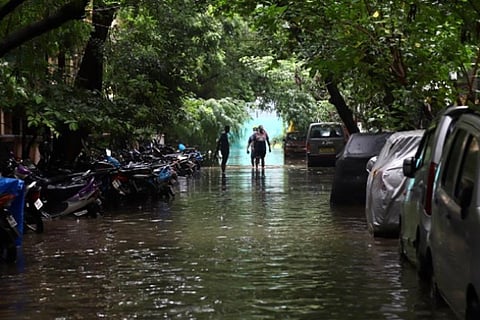

Chennai
According to a report submitted by the State government to the Centre, the estimated loss due to the floods has been pegged at Rs 4,625.8 crore while the actual figure could be much higher if we add up the personal losses of citizens who suffered the wrath of the monsoon. For its part, the DMK government under Chief Minister MK Stalin needs to be commended for handling the floods by wetting their feet, literally.
It was encouraging to watch an active CM donning gumboots and wading through the flooded streets of Chennai to directly assess the damage caused by incessant rain. Other state ministers too swung into action and coordinated relief measures in their respective districts.
The Water Resources Department of the PWD too, for its part, ensured that total transparency was maintained with respect to the level of water in dams
and reservoirs and promptly let out excess water much ahead of a crisis situation, unlike during the floods of 2015 when the allegedly lethargic reaction by officials, (according to a CAG report), largely led to the deluge that drowned parts of Chennai.
However, a lot more needs to be accomplished if the state were to avert floods and crop damage in the future. If weather experts across the world are to be believed, heavy and unpredictable rainfall will soon become the norm, thanks to widespread climate change among other factors.
While intermittent flooding can never be averted during heavy rainfall in rural parts, some serious flood mitigation measures could be taken up with a
renewed thrust on the sidelined project involving the inter-linking of TN rivers which could go a long way in conserving water as well as avoiding floods
through effective distribution of water across the state.
According to a recent CAG report, only two of the eight river-linking projects have taken off while only 21 of the 72 flood canal projects have been completed so far. The two inter-linking of river projects that were sanctioned - Tamirabarani, Karumeniyar, and Nambiyar river project, and the Cauvery-Agniyar-South Vellar-Manimuthar-Vaigai-Gundar river project – have been inordinately delayed.
However, these measures are unlikely to solve Chennai’s now perpetual flooding problems which are clearly an outcome of poor engineering, corruption, and rampant illegal constructions over water bodies.
The biggest challenge for Stalin’s government would be to correct these mistakes of the past several decades during which period thousands of crores of rupees were spent on building dysfunctional drains and culverts. And the apt place to begin that course correction would be from Kolathur, the Chief Minister’s constituency.
While Stalin might have won hearts by stepping into the inundated Kolathur in his first year as CM, the reception to Stalin’s hands-on assessment of the rain damage could be strikingly different if he is unable to solve the issue of flooding over the coming years.
Visit news.dtnext.in to explore our interactive epaper!
Download the DT Next app for more exciting features!
Click here for iOS
Click here for Android